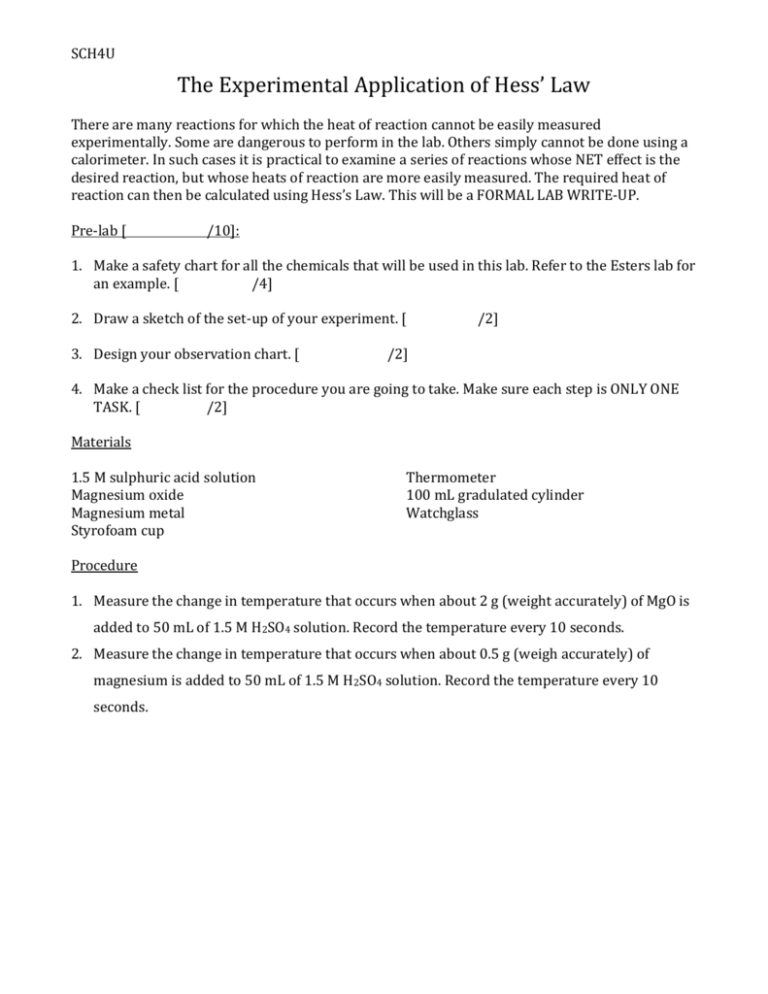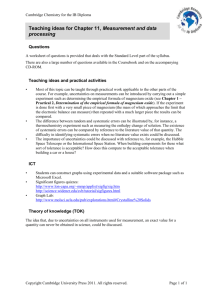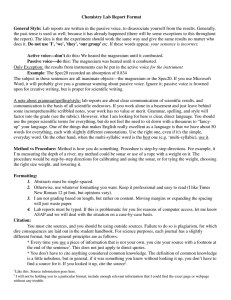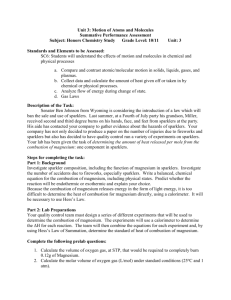Hess Law Magnesium Burning Lab
advertisement

SCH4U The Experimental Application of Hess’ Law There are many reactions for which the heat of reaction cannot be easily measured experimentally. Some are dangerous to perform in the lab. Others simply cannot be done using a calorimeter. In such cases it is practical to examine a series of reactions whose NET effect is the desired reaction, but whose heats of reaction are more easily measured. The required heat of reaction can then be calculated using Hess’s Law. This will be a FORMAL LAB WRITE-UP. Pre-lab [ /10]: 1. Make a safety chart for all the chemicals that will be used in this lab. Refer to the Esters lab for an example. [ /4] 2. Draw a sketch of the set-up of your experiment. [ 3. Design your observation chart. [ /2] /2] 4. Make a check list for the procedure you are going to take. Make sure each step is ONLY ONE TASK. [ /2] Materials 1.5 M sulphuric acid solution Magnesium oxide Magnesium metal Styrofoam cup Thermometer 100 mL gradulated cylinder Watchglass Procedure 1. Measure the change in temperature that occurs when about 2 g (weight accurately) of MgO is added to 50 mL of 1.5 M H2SO4 solution. Record the temperature every 10 seconds. 2. Measure the change in temperature that occurs when about 0.5 g (weigh accurately) of magnesium is added to 50 mL of 1.5 M H2SO4 solution. Record the temperature every 10 seconds. SCH4U Required Calculations 1. Calculate ΔH for the reaction of magnesium oxide with sulphuric acid solution using your experimental results. 2. Calculate ΔH for the reaction of magnesium with sulfuric acid solution using your experimental results 3. Look up ΔH for the combustion of hydrogen gas 4. Write the balanced chemical equation for the combustion of magnesium 5. Use Hess’ Law to calculate ΔH for the combustion of magnesium Results [ /20] Your results section must contain ALL of your calculations. Your calculations must lead up to your finding the HEAT OF COMBUSTION OF MAGNESIUM. Due to this, your results section will be weighed more heavily than your discussion section for this lab. You will also need to include two graphs outlining the temperature change during the two reactions. Join each set of points with a SMOOTH curve. Discussion [ /10] Your discussion section must include the following: - What is the theoretical value for the heat of combustion of magnesium? Show all your calculations. - How does your experimental value compare to the theoretical value? - What are some possible sources of error? Specifically how would those sources of error affect your results?











